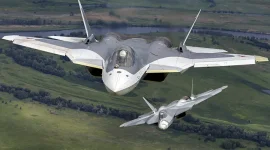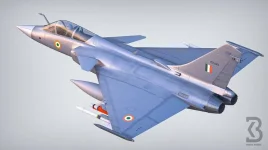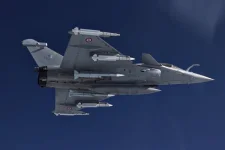- Views: 3K
- Replies: 2
The Indian Army successfully thwarted a significant drone incursion from Pakistan over Jammu on Thursday night, employing its newly upgraded L-70 air defence guns.
The modernized systems, enhanced by India's state-owned Bharat Electronics Limited (BEL), were instrumental in neutralizing a majority of the unmanned aerial vehicles (UAVs) that crossed the Line of Control.
This effective interception highlights the growing strength of India's indigenous defence technology and the L-70 system's critical role in addressing contemporary aerial threats.
The L-70, originally a 40mm anti-aircraft gun developed by Sweden in the 1940s, has undergone a comprehensive transformation by BEL to meet the demands of 21st-century combat.
A key aspect of this modernization involves replacing the gun's old hydraulic systems with advanced all-electric drives. This upgrade significantly improves the weapon's reliability, aiming precision, and ease of maintenance.
The electric drives also allow for quicker reaction times and smoother tracking, which are essential for engaging fast-moving and agile targets such as drones. Such upgrades are a common strategy globally to extend the service life and enhance the capabilities of proven legacy weapon systems.
Further enhancing its capabilities, the upgraded L-70 system is equipped with an Integrated Fire Control System (IFCS). This system includes a sophisticated optronic sight featuring an Eye-Safe Laser Range Finder (LRF), a Day Light Television (DLTV) camera, and a Thermal Imager (TI).
This suite of sensors provides the gun crews with the ability to detect, track, and engage low-flying aerial threats accurately, day or night, and even in poor weather conditions.
Reports from the engagement indicate that the thermal imaging capability was particularly crucial in identifying and tracking the drones in the darkness of Thursday night. Optronic systems are widely used in modern military hardware to provide visual information through various spectrums.
A significant technological advancement in the upgraded L-70 is its autonomous ballistic computation system. This system automatically makes real-time corrections for each shot fired, considering factors like muzzle velocity and the barrel's angle. This ensures a high degree of accuracy by compensating for environmental variables and wear on the gun, thereby increasing the effectiveness of each round.
The autonomous calculation of firing solutions also lessens the mental burden on the operators, enabling them to concentrate more on identifying threats and making engagement decisions.
Another key improvement is the gun's ability to operate silently. Now powered by batteries, the system avoids the distinct noise produced by older hydraulic power systems. This stealthier operation makes it more difficult for adversaries to detect the gun's location, a feature that provided a tactical advantage during the recent engagements in Jammu, where quick and discreet responses were vital.
The modernized L-70 guns are also designed for seamless integration with Target Acquisition (TC) and Fire Control (FC) radars. This network capability allows for real-time sharing of targeting data, enabling a coordinated air defence posture. By receiving precise target information from connected radar systems, the L-70 can more effectively engage multiple threats simultaneously.
The successful defence over Jammu demonstrated this networked capability, with L-70 units reportedly working in conjunction with Indian air defence radars to intercept the Pakistani drones before they could reach their intended targets.
In the operation over Jammu, the upgraded L-70 units, alongside other systems like the ZSU-23-4 'Schilka' (a Soviet-era self-propelled anti-aircraft gun also upgraded by Indian industry), reportedly showed remarkable effectiveness against the swarm of drones.
Their performance against these low-cost, numerous aerial threats has been highlighted, with some field reports suggesting the L-70's electro-optical and digital targeting systems provided exceptional precision.
While comparisons to other advanced systems like Israel’s Iron Dome in this specific scenario have been made, such claims are yet to be officially validated. Nevertheless, the L-70's performance has significantly boosted confidence in India's indigenous defence manufacturing and upgrade capabilities.
The challenge of countering drone swarms, which can overwhelm traditional air defence systems, is a growing concern for militaries worldwide, making effective solutions like the upgraded L-70 increasingly valuable.
The drone and missile attacks on May 8, 2025, targeted several locations in the Jammu region, including the airport, Akhnoor, and Kishtwar. These incursions caused power outages and triggered air raid sirens in various areas.
This recent aggression followed India’s ‘Operation Sindoor,’ a retaliatory measure undertaken against terror infrastructure in Pakistan and Pakistan-occupied Kashmir. This operation was itself a response to the April 22 Pahalgam terror attack, which resulted in the deaths of 26 civilians.
The Indian Army’s rapid deployment of the upgraded L-70 guns and other air defence assets was crucial in ensuring that most of the incoming Pakistani drones were destroyed mid-air, preventing significant damage and casualties on the ground.



